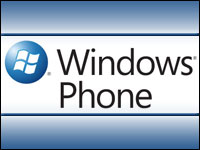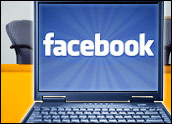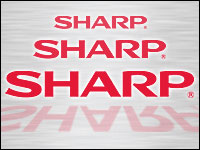
Less than a decade ago, it seemed touch-screen had the touch.
In the years after the 2000 Florida general election controversy, election officials worried about public confidence in voting and, fueled by US$3 billion in federal funding for election improvements, presided over a swift transformation of the American voting experience.
In just six years, the number of counties using electronic direct-entry voting systems tripled, while those using punch cards and paper ballots fell by two-thirds, according to Election Data Services, which tracks the usage of voting equipment.
Direct-entry machines — those ATM-like touch-screen machines where votes accumulate on a memory card — seemed to have so much going for them. They were fast, easy to use and quick to count votes. Paper ballots, it seemed, were so passe.
But since 2006, of the 100 jurisdictions that have switched from one technology to another, not one has chosen a direct-entry system, EDS President Kimball Brace told TechNewsWorld.
They’ve all chosen systems in which voters mark … wait for it … paper ballots, which are then read by optical scanning machines.
So where 38 percent of voters encountered direct-entry systems in the 2006 elections, 33 percent will encounter them in November, according to Brace. And more than half will vote on optical scan machines, up nearly 15 percent from just two years ago.
What Happened?
Criticisms of touch-screen, or direct-entry voting machines began to surface in earnest in 2003, according to Brace. The arguments focus on a few major areas, said Andrew Appel, a Princeton University computer science professor who has studied, and frequently criticized, electronic voting technology.
Like any complicated piece of software-driven hardware, critics claim, computerized voting machines can fall prey to faulty programming that may not show up in testing. For example, two weeks ago, it was revealed that a voting machine manufactured by a Diebold subsidiary had a software glitch that would discount votes. Over the past 10 years, the machines have been in use in 34 states.
More flaws in other machines are also possible. It’s conceivable that a voting machine flaw might not turn up in the manufacturer’s test but might instead show up in response to some unintended trigger on election day, such as an unanticipated series of button presses by a confused voter.
Of course, problematic technology doesn’t begin and end with touch screens. Brace notes cases back in the 1950s when one series of New York’s old-fashioned lever voting systems began miscounting votes when the gears on the machine’s counting wheels broke off. Those machines didn’t provide voters with paper ballots, either.
The problem, Appel told TechNewsWorld, is that it can be much more difficult to diagnose problems without the presence of either an obvious mechanical flaw, like stripped gears, or the kind of audit trail provided by a paper ballot marked directly by voters, showing exactly what they meant to do.
Paper receipts produced by direct-entry machines don’t seem to solve the issue, Brace said, because few voters bother to check their results.
How Hackable?
The machines can also suffer from user interface problems, Appel said, such as in the case of a 2006 Florida election in which voters and poll workers reported problems with touch screens.
Perhaps most significant, according to Appel, it the possibility that someone with unsupervised access to voting machines could alter their software in minutes, resulting in unpredictable results or thrown elections.
There’s no evidence, however, that any such thing has ever happened, and manufacturers and supporters of direct-entry technology point to stringent controls surrounding both their machines and election activities that make such events unlikely.
“There has never been a reported instance of a hack of an election system, and yet if you listen to the activists, they’re making it appear that hacks are happening with every system,” said Brace, who discounts criticisms of direct-entry machines, saying such arguments don’t take into account the panoply of policies and procedures that surround elections.
Ken Fields, a spokesperson for Election Systems & Software of Omaha, agreed.
“Some of the issues — a good number of the issues — have to do with really a complete lack of proven processes that have to be in place, no matter what system you’re using,” he told TechNewsWorld.
Recurring Theme
Nevertheless, in 2005 the General Accountability Office concluded in a report on the state of electronic voting that while there’s little consensus on how widespread problems such as buggy software or improper pollworker practices are, “there is evidence that some of these concerns have been realized and have caused problems with recent elections, resulting in the loss and miscount of votes.”
Criticisms continued in 2006, when a team of Princeton computer scientists conducted a widely publicized audit of a Diebold voting machine, finding it was “vulnerable to extremely serious attacks.” Among other assertions, the team argued someone with unsupervised access to a machine before an election could unlock the memory card compartment, insert a card loaded with stealthy vote-stealing software and return the machine to storage without detection.
At the time, Diebold called the report “unrealistic and inaccurate,” and said it ignored both the machine’s security features and measures taken by election officials — locking up machines, marking them with security tape and so on.
But in a 2007 report, GAO investigators reported their their surveys found “the most current standards were not always adopted and applied, security management practices and controls were employed to varying degrees, and certain types of system testing were not commonly performed. Moreover, jurisdictions’ responses showed that they did not consistently monitor the performance of their systems.”
Also in 2006, activists howled when machines showed 18,000 voters had failed to cast ballots in a hotly contested congressional race, arguing the machines at use must have been in error. In February, a GAO report rejected those claims, saying its testing showed the machines likely performed properly.
Then in 2007, California’s elections chief blocked counties from making widespread use of many of the direct-entry machines present there. In August, Ohio’s Secretary of State told counties to stop the practice of allowing poll workers to take machines home with them before elections over concerns about tampering and exposure to extreme conditions that could cause them to malfunction.
Hope You Like Variety
The net result of the controversies is that more election officials will likely switch over to optical scan systems in coming years, despite having just recently switched to direct-entry systems, Brace said.
“But if we have problems with optical scan systems, then all bets are off,” he said.
One major problem right now involves certification for machines and software. The federal Election Assistance Commission, formed by the same 2002 federal law that provided funding for voting-equipment changes, is now responsible for providing federal certification of election equipment. The agency is still transitioning into that responsibility, and machines that require updates have yet to be certified. The agency said it’s looking into ways to provide interim certification.
Regardless, it’s unlikely the nation will ever go to a single type of machine, software or interface, Brace said. Differences in local election laws and procedures make it too difficult to use a sole system in each of the nation’s 10,072 election jurisdictions.
There’s one thing most everyone in the debate agrees on, and that’s that no technology is perfect. But manufacturers are working on devices they say can combine the best of all systems.
Election Systems & Software, for instance, has deployed a device to Florida for use in some counties there in the upcoming elections. The machine allows voters to scan the results of their hand-marked ballots on a display before casting their ballots — technology designed to reduce one problem with optical scanning technology, which is that voters can still accidentally miss races, or vote for too many candidates in a single race.
Fields, the company’s spokesperson, said that if paper-based applications are what election officials want, then that’s what election equipment manufactures will give them.
“Our focus is on meeting the evolving needs of jurisdictions,” he said.




















































